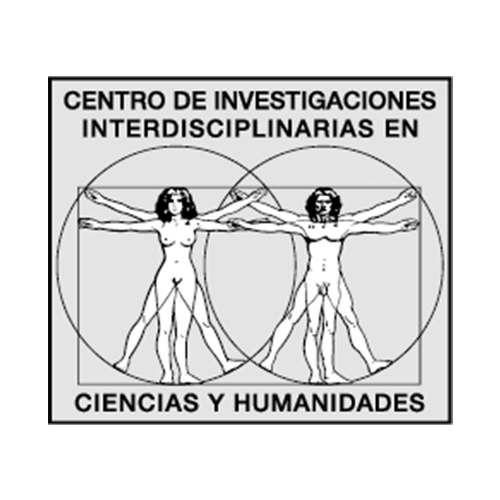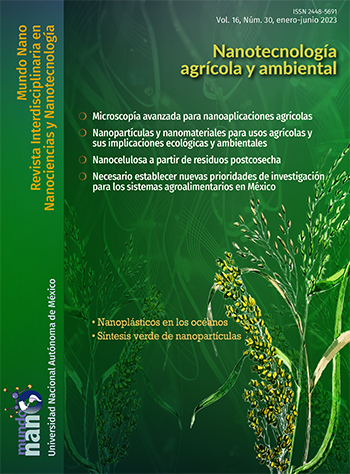Problematization about agricultural and food nanotechnology research in the framework of the new science, technology and innovation policy in Mexico
Main Article Content
Abstract
Debates in the literature on science, technology and innovation (STI) policy argue the importance of reconciling the supply and demand of scientific knowledge to ameliorate social inequalities. In this paper, we problematize the supply and demand of scientific knowledge in the field of agricultural and food nanotechnology (NT) in the context of a change in the conception of STI policy that accompanies the arrival of the new federal government in 2018. To operationalize these dimensions, we first mapped the research projects approved by the National Council of Science and Technology in the period 2012-2019. Subsequently, we examine the research demands established by the council around agri-food systems. In doing so, we discuss the conditions of possibility that agricultural and food NT has to respond to such demands. We conclude that the changes in the conception of science mean new research priorities for the country’s agri-food systems, among them, contributing to food sovereignty and the substitution of agrochemicals in the field; but moreover, they pose challenges to reflect on: How can we make agricultural and food NT contribute to achieve a fair agriculture with rural producers and be respectful with the environment?
Downloads
Article Details

Mundo Nano. Revista Interdisciplinaria en Nanociencias y Nanotecnología por Universidad Nacional Autónoma de México se distribuye bajo una Licencia Creative Commons Atribución-NoComercial 4.0 Internacional.
Basada en una obra en http://www.mundonano.unam.mx.
References
Braun, D. y Guston, D. H. (2003). Principal-agent theory and research policy: an introduction. Science and Public Policy, 30(5): 302-308. https://doi.org/10.3152/147154303781780290 DOI: https://doi.org/10.3152/147154303781780290
Casas, R. y Dettmer, J. A. (2003). Hacia la definición de un paradigma. En María Josefa Santos Corral (ed.), Perspectivas y desafíos de la educación, la ciencia y la tecnología. Ciudad de México: Instituto de Investigaciones Sociales de la Universidad Nacional Autónoma de México, 197-270.
Casas, R., Corona, J. M. y Rivera, R. (2014). Políticas de ciencia, tecnología e innovación en América Latina: entre la competitividad y la inclusión social. En Pablo Kreimer, Léa Velho, Hebe Vessuri y Antonio Arellano (coords.), Perspectivas latinoamericanas en el estudio social de la ciencia, la tecnología y el conocimiento. Ciudad de México: Red CYTED/Foro Consultivo Científico y Tecnológico/Siglo XXI Editores.
Cocos, M. y B., Lepori. (2020). What we know about research policy mix. Science and Public Policy, 47(2): 235-245. https://doi.org/10.1093/scipol/scz061 DOI: https://doi.org/10.1093/scipol/scz061
Conacyt. (2014). Programa especial de ciencia, tecnología e innovación. Ciudad de México: Consejo Nacional de Ciencia y Tecnología. https://www.siicyt.gob.mx/index.php/normatividad/nacional/programa-especial-de-ciencia-tecnologia-e-innovacion-peciti/2014-programa-especial-de-ciencia-tecnologia-e-innovacion
Conacyt. (2020). Programa Institucional Conacyt 2020-2024. Ciudad de México: Consejo Nacional de Ciencia y Tecnología.
Conacyt. (2021). Anexo 3. Lineamientos de la Convocatoria 2021 Propuestas para el Desarrollo de Proyectos Nacionales de Investigación e Incidencia para la Soberanía Alimentaria. https://www.conacyt.gob.mx/PDF/Convocatorias/Programas-Nacionales-Estrategicos/Soberania-alimentaria-propuesta/ANEXO%203.%20LINEAMIENTOS%20DE%20LA%20CONVOCATORIA.pdf
Elzinga, A. y Jamison, A. (1996). El cambio de las agendas políticas en ciencia y tecnología. Zona Abierta, 75-76: 1-22. http://docs.politicascti.net/documents/Teoricos/ELZINGA_JAMISON.pdf
European Environmental Agency (EEA). (2013). Late lessons from early warnings: science, precaution, innovation. Copenhagen, Dinamarca: Eurepean Environment Agency (EEA Report No. 1/2013). https://www.eea.europa.eu/publications/late-lessons-2/late-lessons-2-full-report/late-lessons-from-early-warnings/view
Fernández-Carro, R. (2009). La teoría de principal-agente en los estudios sobre ciencia y tecnología. Arbor, 185(738): 809-824. https://doi.org/103989/arbor.2009. 738n1054 DOI: https://doi.org/10.3989/arbor.2009.738n1054
Herrera, A. (1995). Los determinantes sociales de la política científica en América Latina. Política científica explícita y política científica implícita. Revista Redes, 5: 115.
Grobe, A., Ortwin, R. y Jäger, A. (2008). Risk governance of nanotechnology applications in food and cosmetics. Ginebra, Suiza: International Risk Management Council. https://nanotech.law.asu.edu/Documents/2009/07/Michael%20Vincent%20IRGC%20(2008),%20Food%20and%20Cosmetics_162_4517.pdf
Hermans, M. A., Fox y Van Asselt, M. (2012). Risk governance. En Sabine Roeser, Rafaela Hillerbrand, Per Sandin y Martin Peterson (eds.), Handbook of risk theory. Epistemology, decision theory, ethics, and social implications of risk. Berlín, Alemania: Springer, 1093-1118. DOI: https://doi.org/10.1007/978-94-007-1433-5_44
Kah, M., Kookana, R. S., Gogos, A. y Bucheli, T. D. (2018). A critical evaluation of nanopesticides and nanofertilizers against their conventional analogues. Nature Nanotechnology, 13(8): 677-684. https://doi.org/10.1038/s41565-018-0131-1 DOI: https://doi.org/10.1038/s41565-018-0131-1
Kreimer, P. y Zabala, J. P. (2006). ¿Qué conocimiento y para quién? Problemas sociales, producción y uso social de conocimientos científicos sobre la enfermedad de Chagas en Argentina. Redes, 12(23): 49-78. https://ridaa.unq.edu.ar/bitstream/handle/20.500.11807/612/02-R2006v12n23.pdf?sequence=1&isAllowed=y
Lacey, J. (2017). Bioavailability of nanomaterials and interaction with cells. En R. Busquets (ed.), Emerging nanotechnologies in food science. Oxford, United Kingdom: Elsevier, 81-96. DOI: https://doi.org/10.1016/B978-0-323-42980-1.00005-4
Lemos, M. C., Kirchhoff, Ch. J. y Ramprasad, V. (2012). Narrowing the climate information usability gap. Nature Climate Change, 2(11): 789-794. https://doi.org/10.1038/NCLIMATE1614 DOI: https://doi.org/10.1038/nclimate1614
Linares, Salgado, J. E. (2007). Controversias tecnocientíficas y valoración global del riesgo. Anuario de Filosofía, 1: 61-69. http://www.journals.unam.mx/index.php/afil/article/view/31432/29066
Pérez-Moreno, A., Fernández-Luqueño, F., Pérez-Hernández, H., Vázquez-Núñez, E., Vera-Reyes, I., Amir, A. (2021). Nanoscience and nanotechnology regarding food packaging and nanomaterials to extending the postharvest life and the shelf life of foods. En Food losses, sustainable postharvest and food technologies. Elsevier, 313-384. DOI: https://doi.org/10.1016/B978-0-12-821912-6.00001-8
Polack, F. P., Thomas, S. J., Kitchin, N., Absalon, J., Gurtman, A., Lockhart, S., ... y Gruber, W. C. (2020). Safety and efficacy of the BNT162b2 mRNA Covid-19 vaccine. The New England Journal of Medicine, 383: 2603-2615. https://doi.org/10.1056/NEJMoa2034577 DOI: https://doi.org/10.1056/NEJMoa2034577
Ranjan, S., Dasgupta, N., Chakraborty, A. R., Samuel, S. M., Ramalingam, C., Shanker, R., y Kumar, A. (2014). Nanoscience and nanotechnologies in food industries: opportunities and research trends. Journal of Nanoparticle Research, 16(6): 2464-2487. https://doi.org/10.1007/s11051-014-2464-5 DOI: https://doi.org/10.1007/s11051-014-2464-5
Renn, O. y Grobe, A. (2010). Risk governance in the field of nanotechnologies: core challenges of an integrative approach. En Graeme A. Hodge, Diana M. Bowman y A. D. Maynard (eds.), International handbook on regulating nanotechnologies. Inglaterra, Reino Unido: Edward Elgar Publishing, 484-507. DOI: https://doi.org/10.4337/9781849808125.00032
Ruivo, B. (1994). “Phases” or “paradigms” of science policy? Science and Public Policy, 21(3): 157-164. https://doi.org/10.1093/spp/21.3.157 DOI: https://doi.org/10.1093/spp/21.3.157
Saldívar-Tanaka, L. (2019). Regulando la nanotecnología. Mundo Nano. Revista Interdisciplinaria en Nanociencias y Nanotecnología, 12(22): 1-21. https://doi.org/10.22201/ciich.24485691e.2019.22.63140 DOI: https://doi.org/10.22201/ceiich.24485691e.2019.22.63140
Sanz-Menéndez, L. (1997). Estado, ciencia y tecnología en España, 1939-1997. Madrid, España: Alianza Editorial.
Sarewitz, D. y Pielke, R. A. (2007). The neglected heart of science policy: reconciling supply of and demand for science. Environmental Science & Policy, 10(1): 5-16. https://doi.org/10.1016/j.envsci.2006.10.001 DOI: https://doi.org/10.1016/j.envsci.2006.10.001
Sun, H., Jiang C., Wu L, Bai1 X. y Zhai S., (2019). Cytotoxicity-related bioeffects induced by nanoparticles: The role of surface chemistry. Frontiers in Bioengineering and Biotechnology, 414(7). https://doi.org/10.3389/fbioe.2019.00414 DOI: https://doi.org/10.3389/fbioe.2019.00414
StatNano. (2020). Indicator: Nanotechnology publications (article). Description: Number of nanotechnology-related articles indexed in Web of Science (WoS). https://statnano.com/report/s29#ixzz6pFU2bsFf
Tian, T., Chong, Y. y Ge, C. (2020). Understanding the nano–bio interactions and the corresponding biological responses. Frontiers in chemistry, 8: 446. https://doi.org/10.3389/fchem.2020.00446 DOI: https://doi.org/10.3389/fchem.2020.00446





